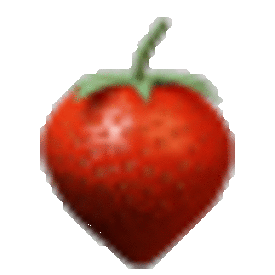Making Bland Food More Flavorful

Wtn_Gurl
Posts: 396 Member
So I am eating low sodium, watching my sugars, and calories. Now, I cook vegetables, chicken veg soup, etc. and trying to infuse better flavor (like the way restaurants taste however, they prolly add in more salt and sugars). So, I made some crab soup made with low sodium canned tomatos, and it came out kinda bland. I used onions, garlic, for flavor, but it still tasted bland.
So what do you do to add more flavors into your food without using sugars and salt. I have some no-salt Mrs Dash but it does not really add flavor.
So what do you do to add more flavors into your food without using sugars and salt. I have some no-salt Mrs Dash but it does not really add flavor.
0
Replies
-
Fresh herbs!3
-
I agree with fresh herbs. Or dried herbs and peppers. I like Mrs. Dash but I'm not fond of the generic one (table blend, I think?). But the garlic & herb, onion & herb and jalapeno & herb all get frequent use at our house. Other brands of no salt seasoning blends are also good. McCormick and Kroger have some good ones.
Also, if you need to reduce salt and miss it you might try potassium chloride which is a common salt substitute.0 -
I would avoid salt substitutes, as they taste nothing like salt (the ones I've tried had a bit of a metallic, bland flavor). I do recommend fresh herbs and Ms. Dash as well, though it's the lemon pepper blend that gets the most use here (it's the most flavorful one to me, giving a nice citrus bite to what it's added to).1
-
I use fresh herbs and chili peppers for more flavor... Seems to work..0
-
Citrus zest and/or juice can add a lot of flavor. I love to zest some lemon on my vegetables.6
-
SuzySunshine99 wrote: »Citrus zest and/or juice can add a lot of flavor. I love to zest some lemon on my vegetables.
Oh yes! Also this ^
Flavored vinegars can also add flavor. Balsamic is delicious on roasted vegetables.3 -
Salt... Unless there's a reason you need to avoid sodium.7
-
This content has been removed.
-
Lots of good advice here ... fresh herbs, or *good* dried herbs allowed to re-hydrate and re-invigorate, spices, vinegars, and especially citrus juice and zest. Fresh, ripe veggies and fruits are great.
But mostly, you will find you tastebuds will change after a while as you wind down from a lot of added sugar and salt and the natural tastes of the foods will become sharper. One thing, during this transition, I found that employing prep methods that made a melange (mix) or mush of flavors tended to flatten the taste. Contrast worked better for me.
I'm in the US, and only buy no-salt added canned tomato products. I find Hunts to be good. Also, Kitchen Basics no-salt-added stock. I can control the seasoning level this way. We find we can keep to around 1500 mg/day added sodium average and maintain good flavor.1 -
@abetterme9366 had some great ideas that she shared with me. It really helped.0
-
You're probably just not used to actually tasting food...if you were eating a lot of high sodium before, you're used to everything tasty salty.
Also, don't go too low sodium...it's an essential electrolyte and I think way too many people get wrapped up in trying to eliminate something that is a required nutrient. Find the middle ground...6 -
I LOVE Penzey's low salt seasoning mixes (and their regular ones!)- it adds a huge array of flavors to my meals. Krakow Nights, Arizona Dreaming, their currys, the pizza seasoning (seriously adds awesome flavor to frozen pizzas which we do from time to time), etc. Check them out at https://www.penzeys.com/5
-
Flavor God has some good low-sodium spices
Balsamic vinegar is my go-to for lots of flavour and not much sodium and a little bit goes a long way
Sesame oil and fresh ginger are good flavours for stirfrys0 -
it's night and day difference if you brown or caramelize onions before adding them to a recipe, or toast garlic. Yes, you need a little butter or oil to do this, but not as much as most recipes call for. I use a very modest amount. Worth it for the overall flavor profile! Also - roasting veggies brings out their sweetness. tastes completely different than steaming or boiling. You do need to use some fats in cooking to get the mouthfeel and rich flavor. You can also steam veggies and put herbs in the water used for steaming, or use broth to cook veggies.3
-
I use garlic and onion powder generously, in almost everything I cook. As for herbs, if you are using dried add way more then you normally would. I love Italian herb seasonings. Crushed red pepper, and ground chipotle peppers also add a lot of great flavors. Lemon juice, lime juice and balsamic vinegar are some other good ways to increace your flavor profile as others have mentioned.0
-
I have a cupboard full of spices and herbs and I use them all the time in everything.
And yeah, I salt things in moderation.
I also extract flavors into fat: don't just throw onions in a soup, sautee them in some olive oil first. Same with garlic. Many flavor compounds are fat-soluble, meaning that if you cook spices and herbs with fat you'll release more complex flavors. For even more fun, a little bit of alcohol will also extract flavors that you might not get otherwise.
3 -
it's night and day difference if you brown or caramelize onions before adding them to a recipe, or toast garlic. Yes, you need a little butter or oil to do this, but not as much as most recipes call for. I use a very modest amount. Worth it for the overall flavor profile! Also - roasting veggies brings out their sweetness. tastes completely different than steaming or boiling. You do need to use some fats in cooking to get the mouthfeel and rich flavor. You can also steam veggies and put herbs in the water used for steaming, or use broth to cook veggies.
Excellent point - caramalization and roasting goes a really long way for flavour! I love roasting my garlic before adding it to my recipes. Gives it a nice sweet, buttery flavour.2 -
I suggest that you put some respek on it.0
-
For crab or most seafood restaurants use old bay. Not sure what's in it.
I'm not sure if you are using powered onion and garlic but if you use fresh or even roasted as mentioned above, it is way more flavorful.0 -
lemon/or citrus, balsamic vinegar, onion powder, garlic powder, fresh ground pepper tastes better than store bought ground in my opinion.0
-
There is so much more to life than onions and garlic! Also, have you tried salt substitutes like NuSalt?0
-
Lemon juice, lime juice, ginger, garlic, caramelized onion, herbs, cayenne pepper, vinegars, oils, coconut milk, roasted peppers, browned meats, low sodium broths.3
-
Just spend some time online looking at what herbs and spices work well with the foods you are cooking and have some fun experimenting in the kitchen. It is amazing how much difference this can make to a meal.0
-
Pico de gallo! I make it at home so here's my recipe:
6 jalapenos (increase or decrease depending on how spicy you like stuff, also removing the seeds will calm the intensity)
4 Roma tomatoes
1/2 onion
1 clove garlic
1 lime juiced
1/4 cup fresh cilantro
A dash of salt (just a 1/4 teaspoon or less)
Chop everything up as tiny as possible, mix together and refrigerate. That's it. Because of the lime juice and jalepenos, it lasts for a good two weeks. A tablespoon has very few calories and low sodium, but a lot of flavor!1 -
_inHisGrace wrote: »For crab or most seafood restaurants use old bay. Not sure what's in it.
I'm not sure if you are using powered onion and garlic but if you use fresh or even roasted as mentioned above, it is way more flavorful.
If you go to Target, there's an Archer Farms brand seasoning called "French Bistro", it's really amazing on fish.0 -
I have a rosemary bush outside my kitchen window that is my favorite seasoning herb. Various vinegars and oils, mushrooms and onions, Italian seasoning with random green stuff. Generally doesn't hurt to go online and read a few different versions of recipes, abd pick and choose the ingredient's you want to play with.0
-
I have a lot of herbs, spices, etc. but for a quick jolt of flavor we love the Mrs. Dash Herb & Garlic spice mix. We also have a mess of Penzey's salt-free herb/spice mixes.
You don't need to eat "bland" food to be low sodium. There's no reason to cut out chili peppers, for example. Lemon juice and zest, lime juice and zest, grated fresh ginger, ... there are a gazillion no-sodium options.0 -
cwolfman13 wrote: »You're probably just not used to actually tasting food...if you were eating a lot of high sodium before, you're used to everything tasty salty.
Also, don't go too low sodium...it's an essential electrolyte and I think way too many people get wrapped up in trying to eliminate something that is a required nutrient. Find the middle ground...
Well, unless people really overdo it, salt shouldn't make food taste salty. At low levels it enhances the flavor of other food.
You do bring up a great point - everyone needs sodium to live. So I'd say to use some salt, just control how much.
And, make sure you don't go low sodium for no reason. If your blood pressure is normal, there is really zero benefit to being low sodium, and possibly extreme harm if you became hyponatremic. On the other hand, if you have high blood pressure and your doctor has given you guidelines on how much sodium to have, follow that and track your sodium intake. You should still be using some salt, just less.
Also keep in mind 1 gram of salt is 0.4g of sodium. I've seen a lot of people mix that up.2 -
I just wanted to say that while it is true that going away from highly processed foods will tend to make you notice salt more, so you crave slightly less salty foods...that's just salt (and sugar, usually). But there aren't really any other flavors you are going to run into that you will suddenly crave less once you eat more homemade foods.
The homemade foods will STILL taste bland as all get out until you start adding some zing. (this said after I had a diet of less than ten foods for months, due to doctor recommendations - tried some of the 'amazing' foods that my healthy friends loved, and they were STILL horribly bland).
So, this is what I've found.
First - you will typically need to add a lot more of the 'flavoring' ingredients to really get a good flavor. Much more than you'd think you would need, typically. More onions, more garlic, more herbs, and so on. And more than a lot of recipes ask for - bland tasting recipes seriously seem to be REALLY common, sigh.
Second - if you have not yet, go check out Indian grocery stores. You can get HUGE amounts of spices there for good prices. Because in Indian cooking, you actually make very flavorful food with a lot of spices, so the recipes use a lot more of them. I would actually recommend checking out some Indian recipes, if you are interested, even if you don't like indian food - they tend to have good advice for how to bring out the most from your spices.
And on that note, Asian recipes tend to have good advice for how to cook veggies and retain more of the flavor, so they are good for that type of information.
Third - herb gardens are a life saver. Fresh herbs are great, but you have to use such large amounts to get a good flavor (if you aren't using flavored seasoning packets any more), that the price starts rising pretty quickly. herb garden helps with that a lot.4
This discussion has been closed.
Categories
- All Categories
- 1.4M Health, Wellness and Goals
- 398K Introduce Yourself
- 44.6K Getting Started
- 261.1K Health and Weight Loss
- 176.4K Food and Nutrition
- 47.7K Recipes
- 233K Fitness and Exercise
- 461 Sleep, Mindfulness and Overall Wellness
- 6.5K Goal: Maintaining Weight
- 8.7K Goal: Gaining Weight and Body Building
- 153.4K Motivation and Support
- 8.4K Challenges
- 1.4K Debate Club
- 96.5K Chit-Chat
- 2.6K Fun and Games
- 4.7K MyFitnessPal Information
- 16 News and Announcements
- 19 MyFitnessPal Academy
- 1.5K Feature Suggestions and Ideas
- 3.2K MyFitnessPal Tech Support Questions
























